An essential part of being in a marching band is wearing and caring for your uniform.
The reason why marching bands wear uniforms dates back to the middle ages. During the middle ages, musicians would join local feudal armies and play to direct soldiers to the battlefields, raise morale, and energize the soldiers.
To show their allegiance to their army and feudal lords, musicians and soldiers would wear plumes (feathers worn on a helmet or hat). The first item of the marching band uniform that existed were hats with colored plumes.
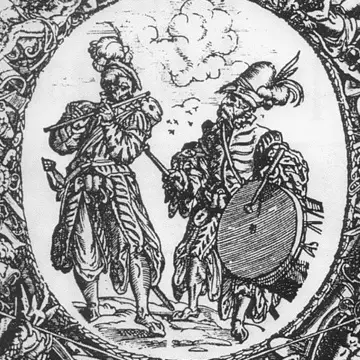
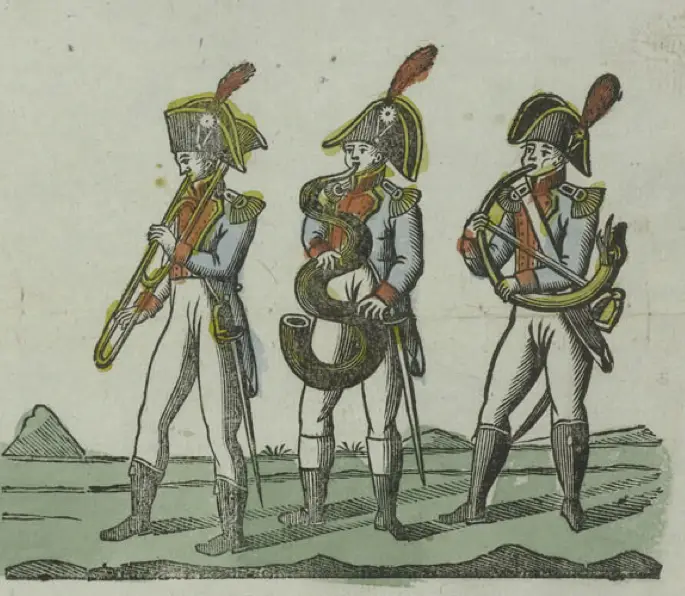
During the 17th through 19th centuries, history began to see armies wearing uniforms of the same color and similar style.
The French’s military uniforms were popular, as well as their ornamentation. Ornamentation included buttons, elaborate trim, and braided ropes. Because members of the military bands were enlisted soldiers and would wear the same uniform as their fellow soldiers.
Fun Fact: Due to the use of gunpowder, which would result in smoke and dust, wearing brightly colored uniforms helped the soldiers identify their men, not confuse them for the enemy.
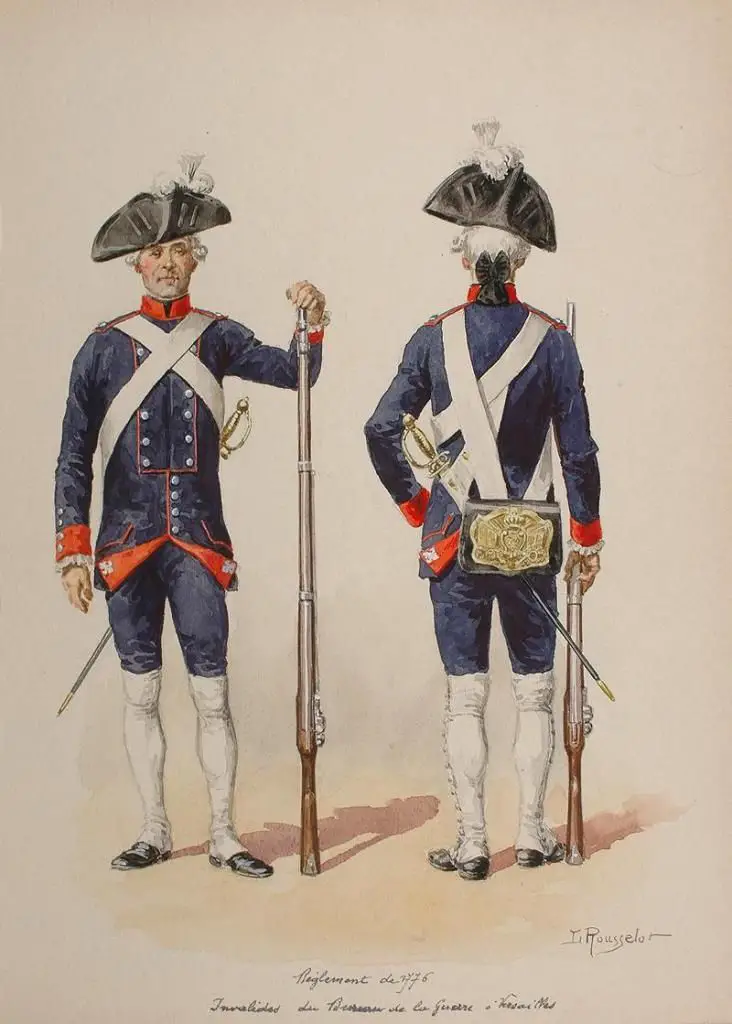
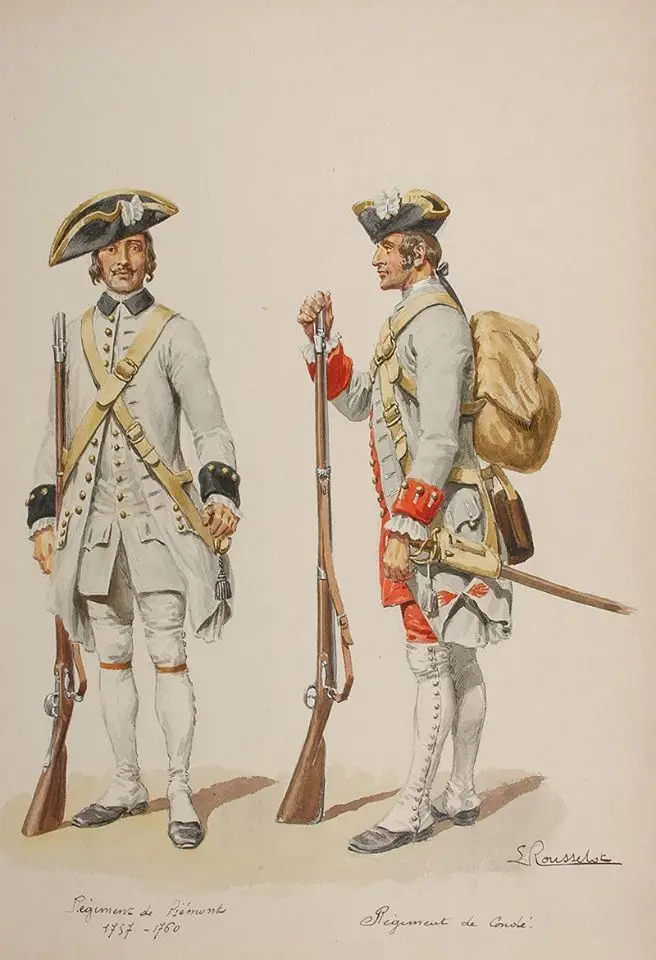
An example of the “French style” military uniforms and coats.
Over time, marching bands became more common in schools and universities.
The uniforms represent the history and origin of marching bands, military drum, and bugle corps. Marching bands still excite and increase the morale of others, but instead of soldiers, it is football players and the audience at games and other school spirit-related events.
The Modern Marching Band Uniform
Marching band uniforms were once made from thick and heavy wool fabrics, like old military uniforms. These wool uniforms were hard to move in and caused many musicians to overheat, resulting in heat exhaustion and heat stroke.
If you are currently a member of marching band you will be happy to note; In the 1960s, wool was replaced with fabrics made of a blend of polyester and cotton, which were more comfortable and breathable.
I know in the hot early summer performances especially if you live in the south it’s easy to feel like you are baking in those uniforms!
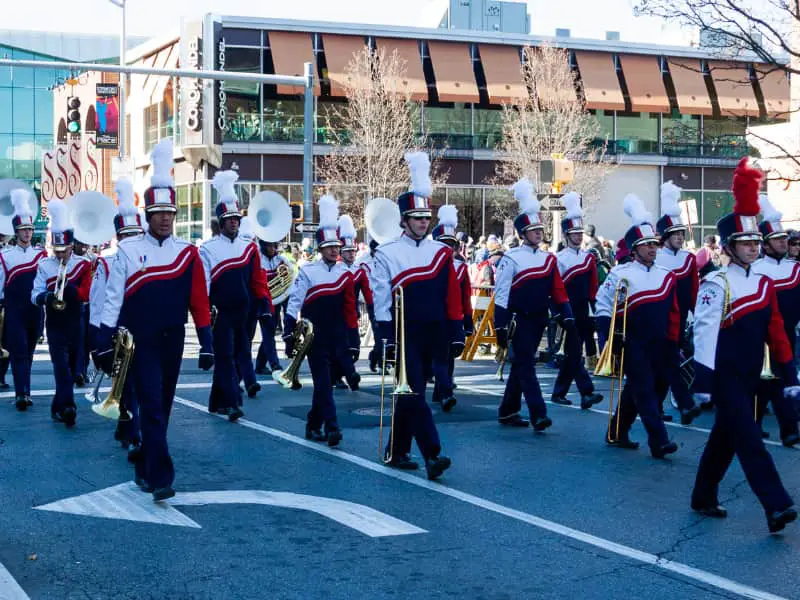
Modern marching band uniforms have five standard pieces with unique names, styles, and colors.
Marching Shako and Plume
The first piece of your marching band uniform is the shako. The shako is the traditional marching band uniform hat. Shakos are tall cylinder-shaped military caps that feature multiple colors, a decorative metallic plate, a symbol related to your school, or all three!
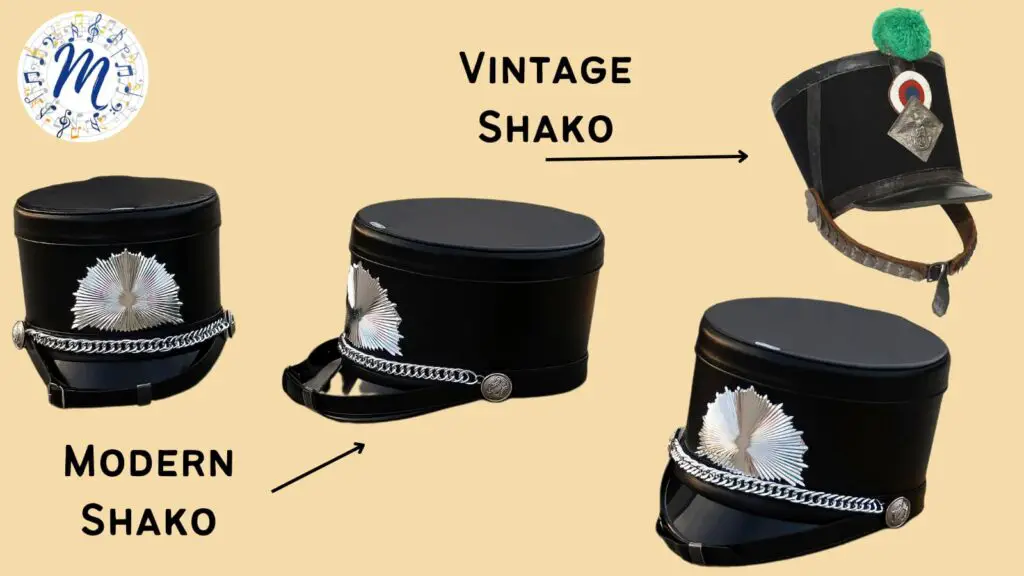
The name “shako” pays tribute to the military history of marching bands and their uniform styles. In the beginning, shakos were hats that shepherds would wear in Hungary.
The style was adopted by the military and became a part of the uniforms of Hungarian hussar troops early in the 18th century. In the 19th century, shako-style military hats were standard in militaries across Europe and the Americas.
Shakos have either plastic or metal chain link straps that are worn under your chin (or if you are in the battery/drumline, you may wear your chin strap under your bottom lip).
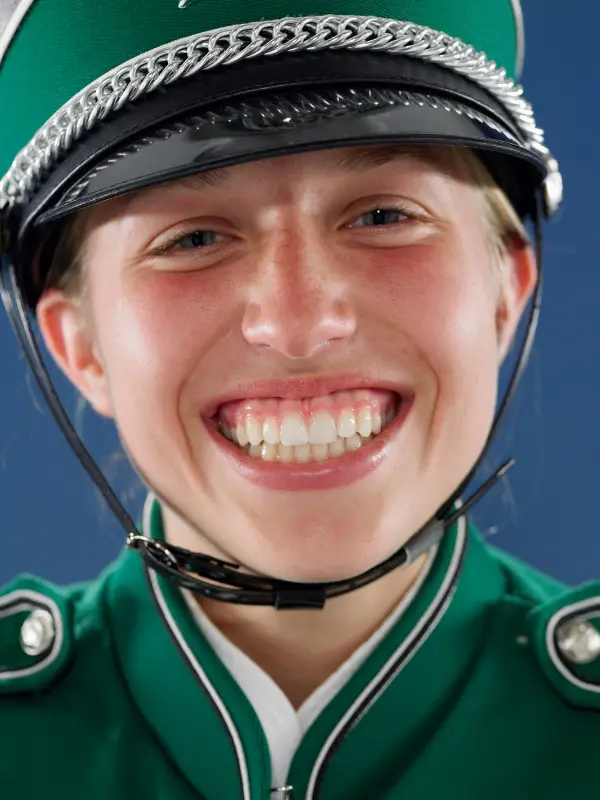
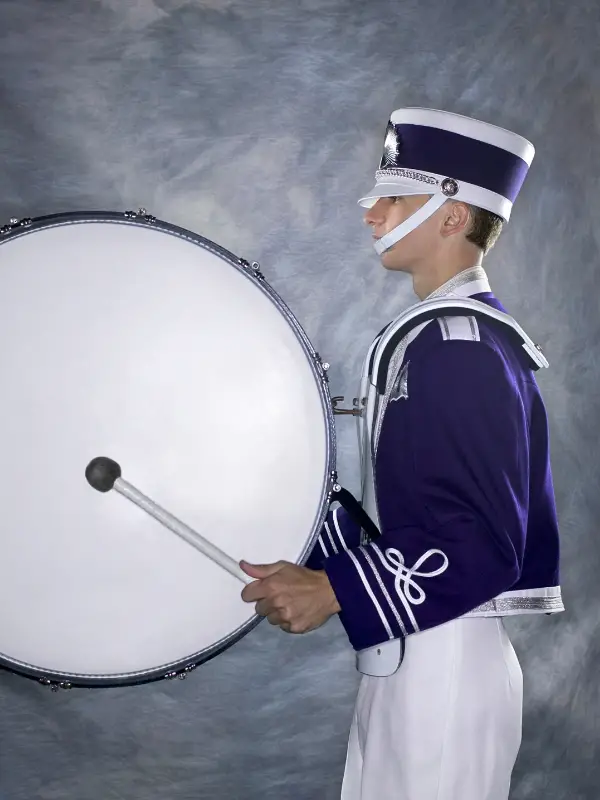
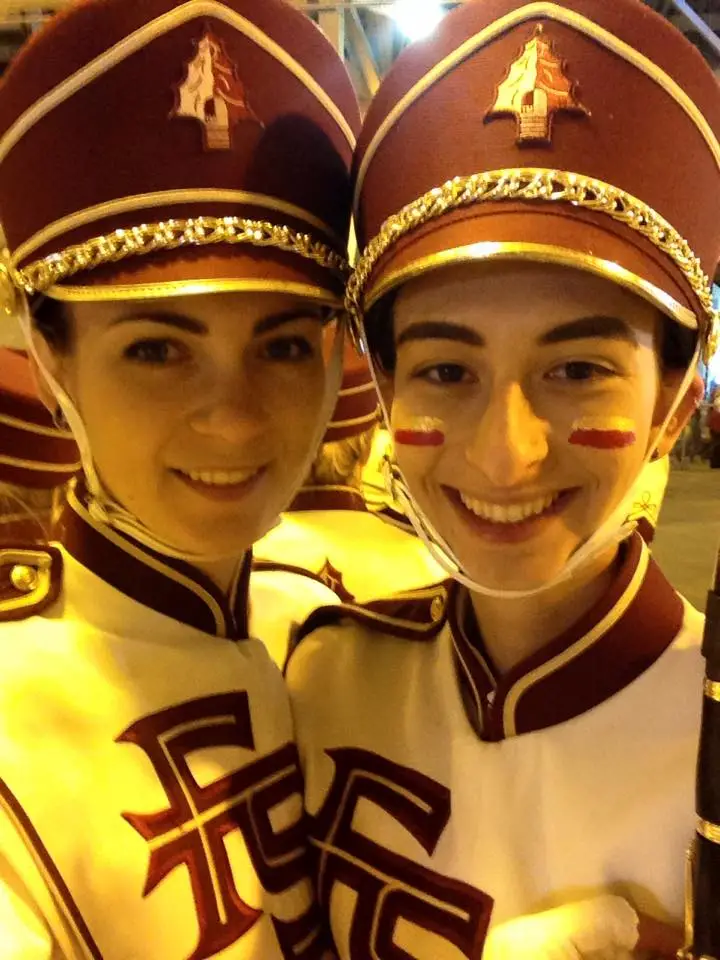
There are many variations of style for shakos that you will see in the marching arts today. Drum majors in HBCU (Historically Black Colleges and Universities) schools and at other universities like Ohio State University wear what are often called Q-tip hats.
Note: Check out our list of the 30 most amazing college/university marching bands!
Also called busby hats this website makes these specialized hats if you are looking for some for your marching band.
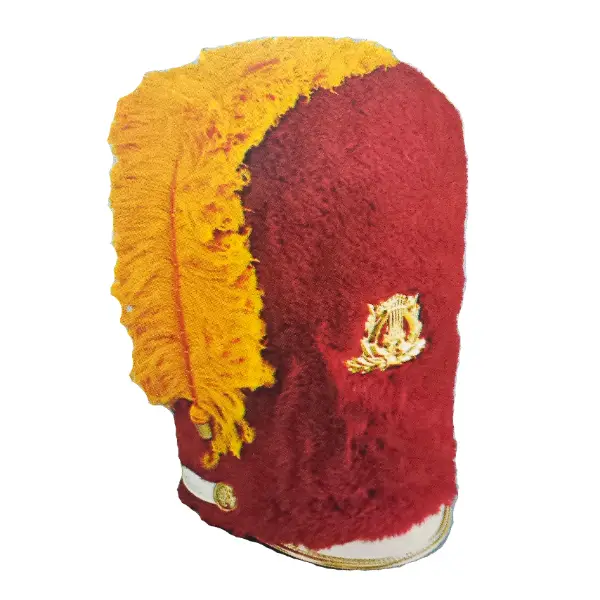
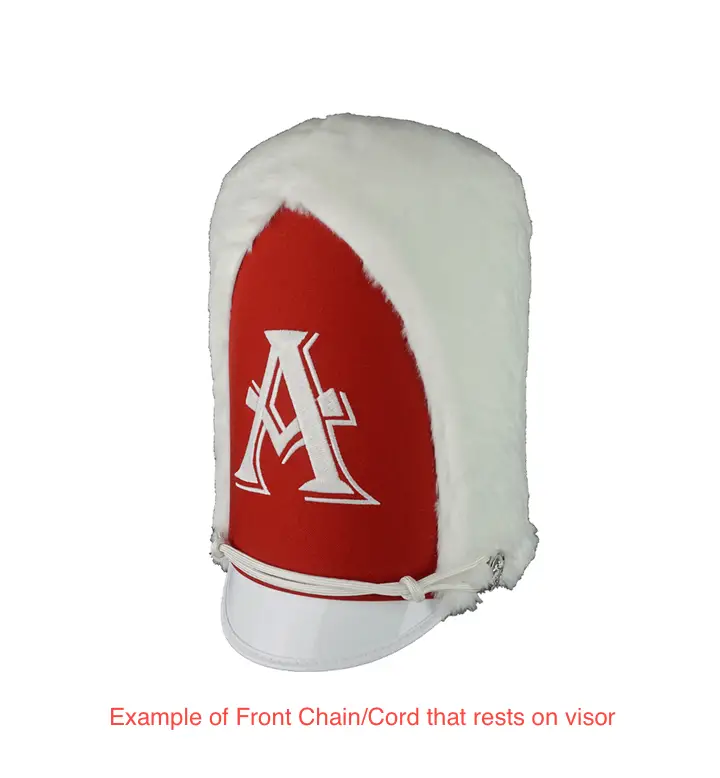
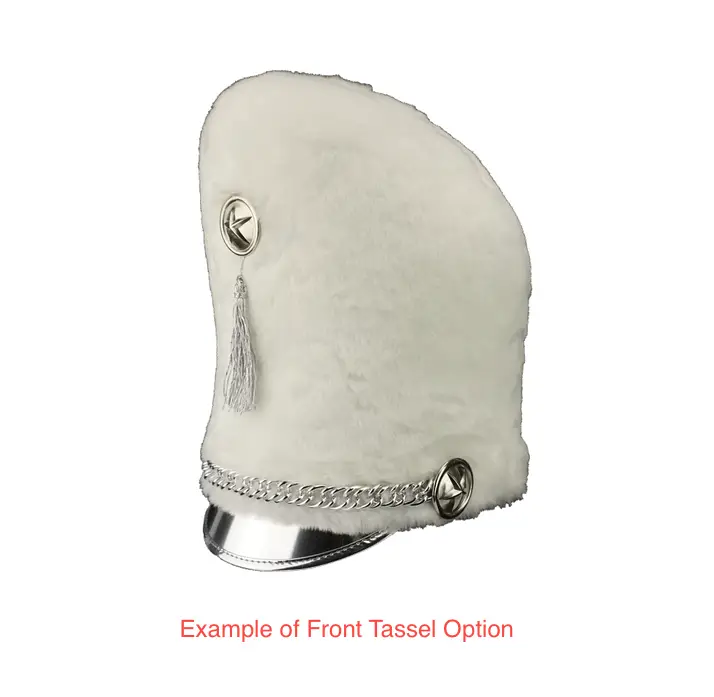
Q-tip hat wasn’t all that bad – it was hollow inside and had a drawstring area that pulled closed to keep it from slipping down your head to your neck. Thus, it was the perfect place to store your money, lip gloss, candy bars, flasks, stash, etc. when traveling to an away game!
-Groovymerlin *source: Flickr
Some high school and college bands may wear cowboy hats when performing on the fields. These are another alternative form of a shako that some bands in the American South (ex: University of Texas Austin Longhorn Band).
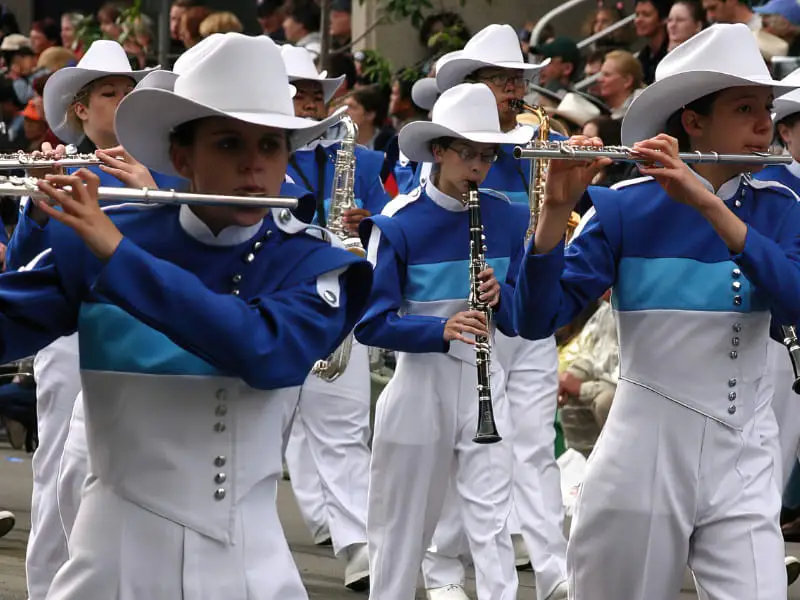
Marching Band Plume
The second piece of a marching band uniform is the plume.
A plume is the feathers/pom-pom/streamers that are placed at the top of your shako. Plumes date back to colored plumes worn by militaries and marching musicians during the middle ages.
Marching bands wear plumes today to not only honor the timeless military traditions, but to add style and color to their show.
Plumes often make it easier for the audience to follow the lines created in formations as the marching band performs.
Top TIp: Always be sure that your plume is inserted fully into your shako before stepping out on the field, so it doesn’t fall out mid-performance!
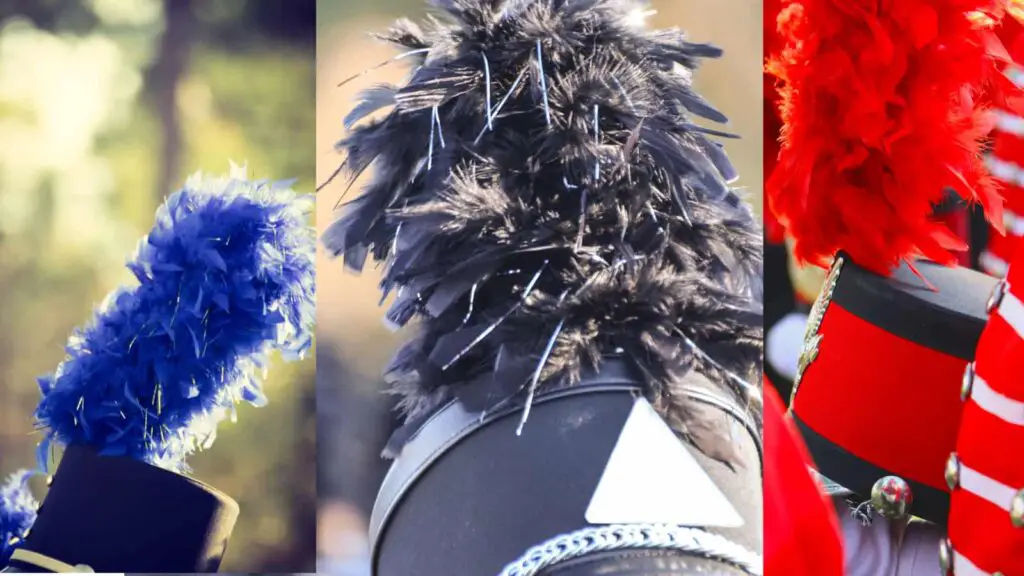
Marching Band Jacket
The third piece of a marching band uniform and the most recognizable feature is the jacket.
There are many different styles, designs, and ornamentation that can be found on marching jackets. Marching band uniform jackets make the band look uniform, add to the visual effects of the drill, and help make shapes on the field easier for the audience to see.
A famous brand that makes marching band uniform jackets is DeMoulin, and on their website, you can see hundreds of different uniform jacket styles and colors. Some universities that wear DeMoulin jackets include Pennsylvania State University, The University of Florida, and Clemson University. Below are the uniform jackets for the three schools mentioned.
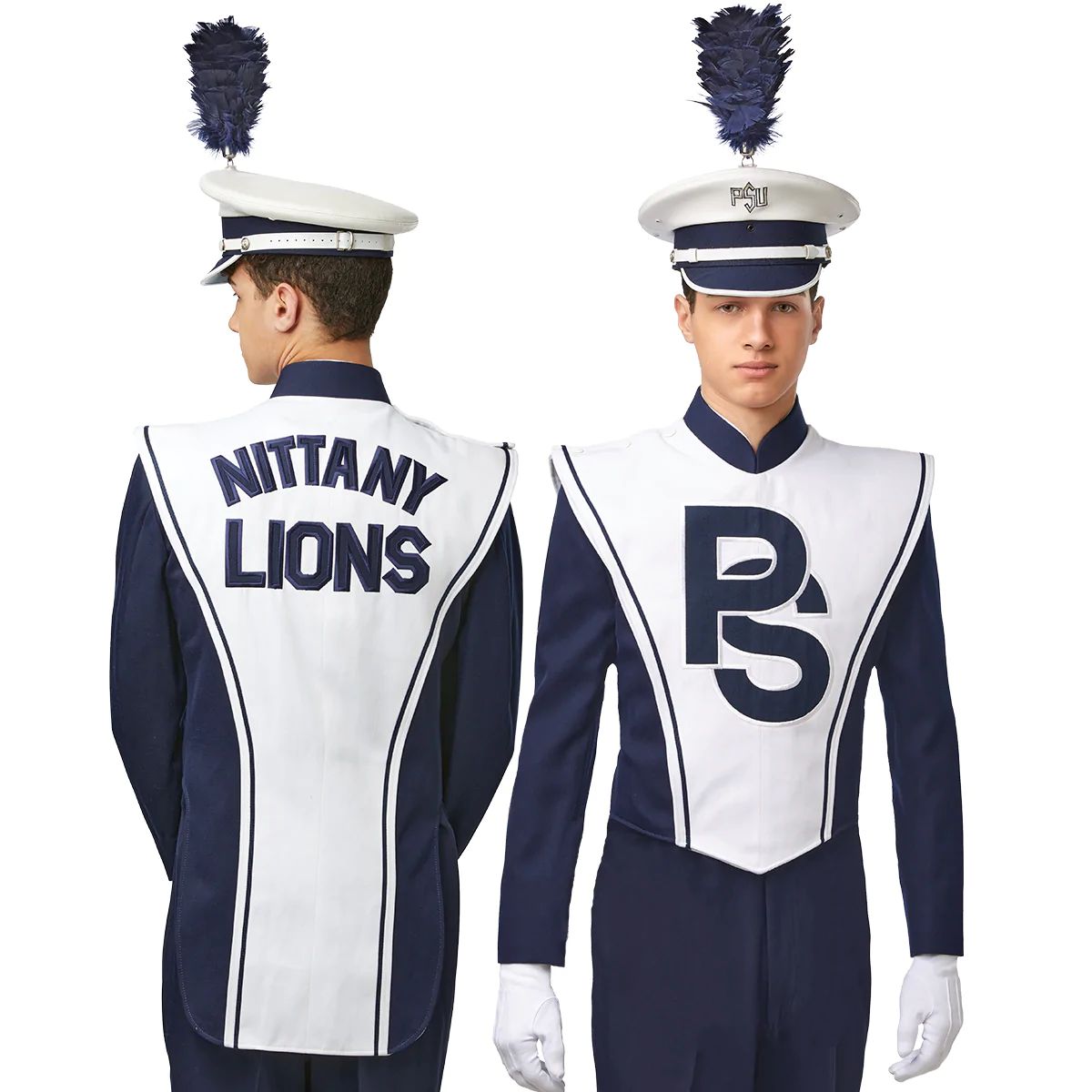
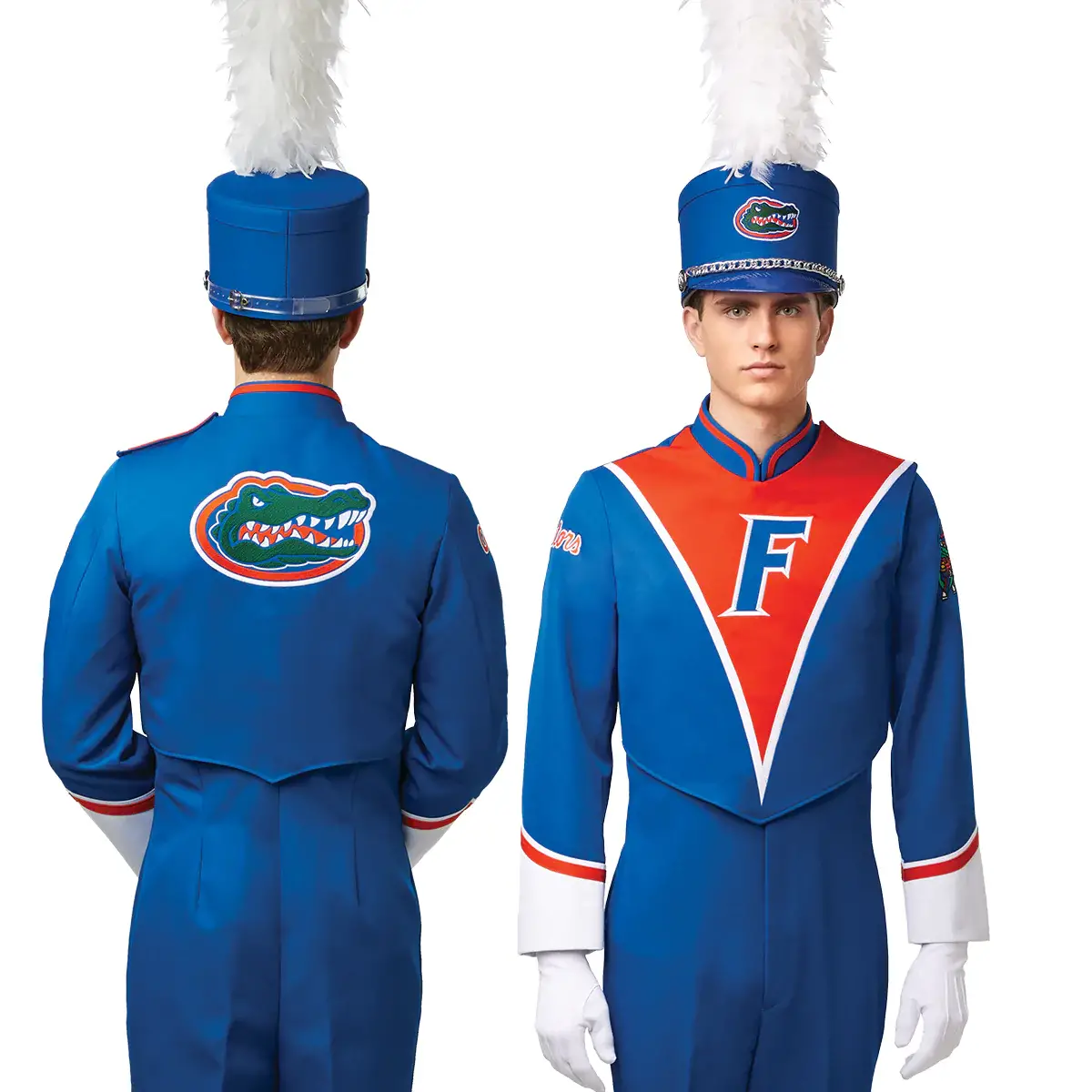
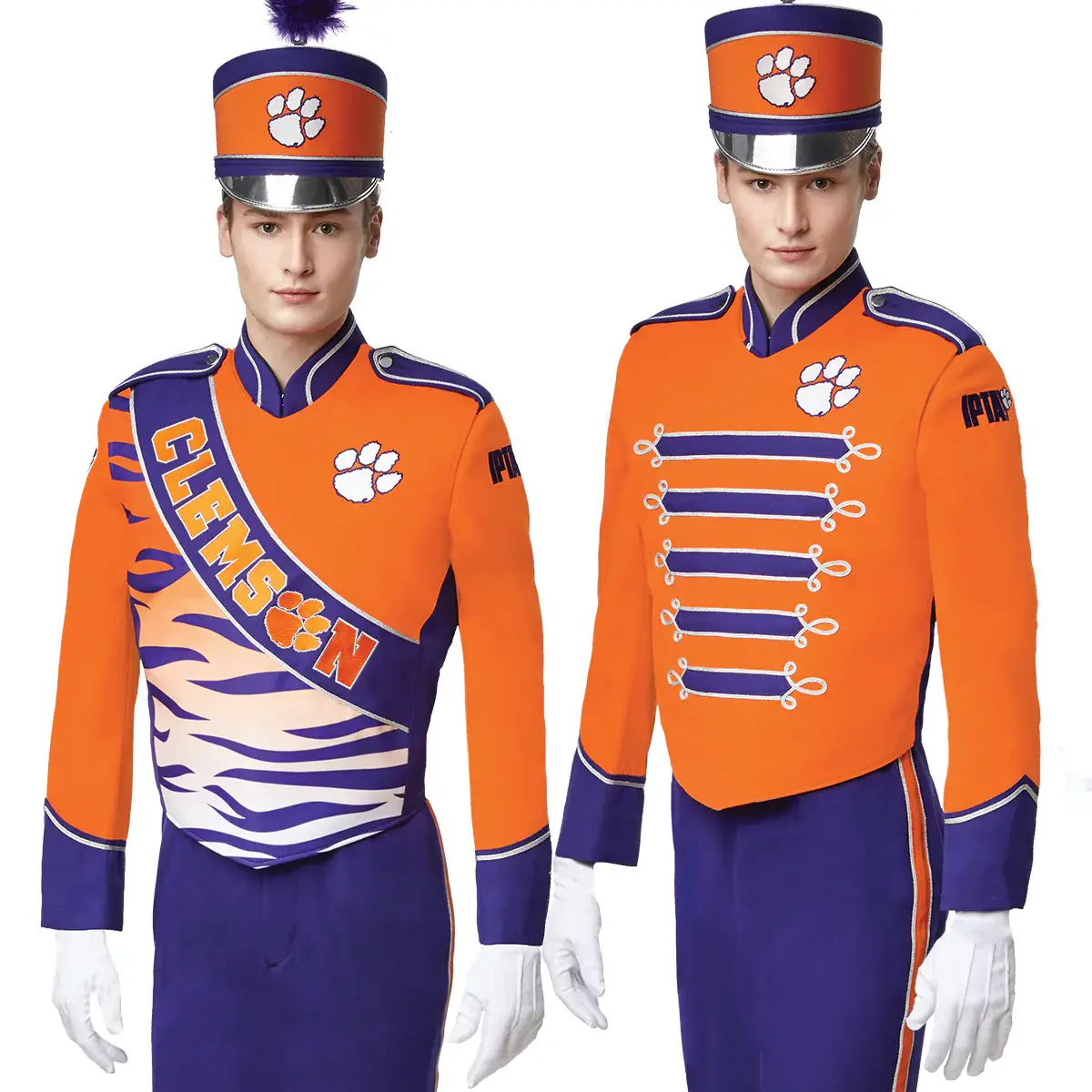
Marching Band Bibbers
Marching band uniforms are called bibbers or bibs. Bibbers are overall-type pants that are worn underneath your uniform jacket.
Bibbers come in many different styles and colors, but they always have three features that are the same: shoulder straps, a long zipper, and a distinct pleat that runs down each leg.
Top Tip: Don’t forget to always align your uniform pants at the pleats before hanging them up after wearing them to keep that crisp pleat in place.
Bibbers aren’t the most attractive or stylish pants and tend to fit very well or are super big and baggy. Everyone in a high school or college marching band will wear baggy bibbers at some point; think of it as a marching right of passage.
Below are examples of standard marching band uniform bibbers.
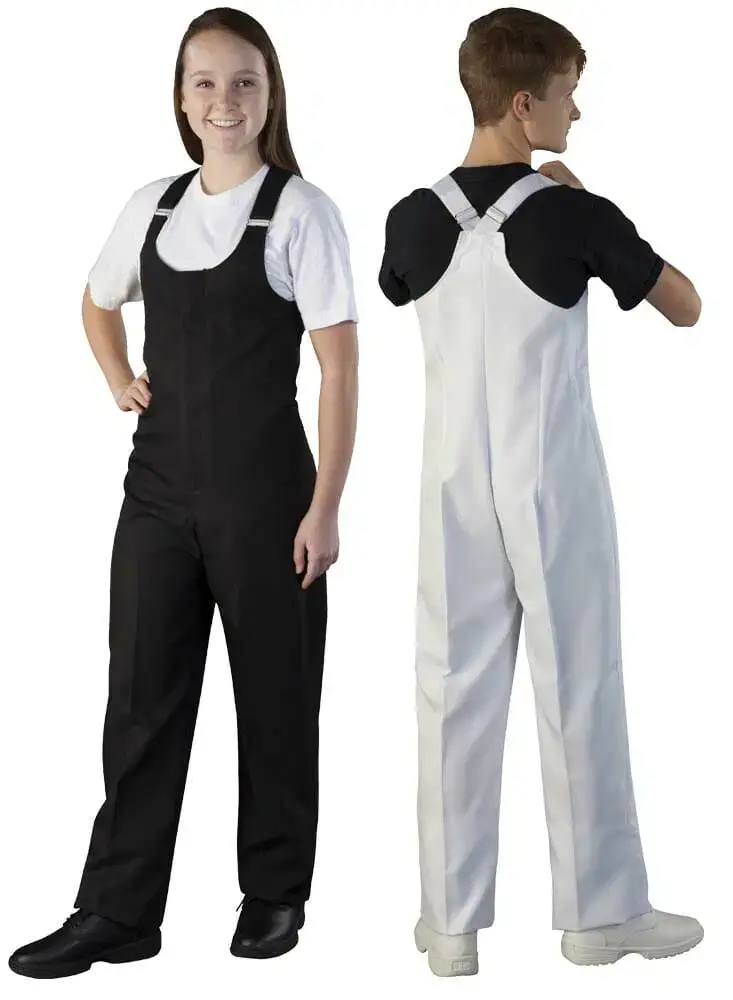
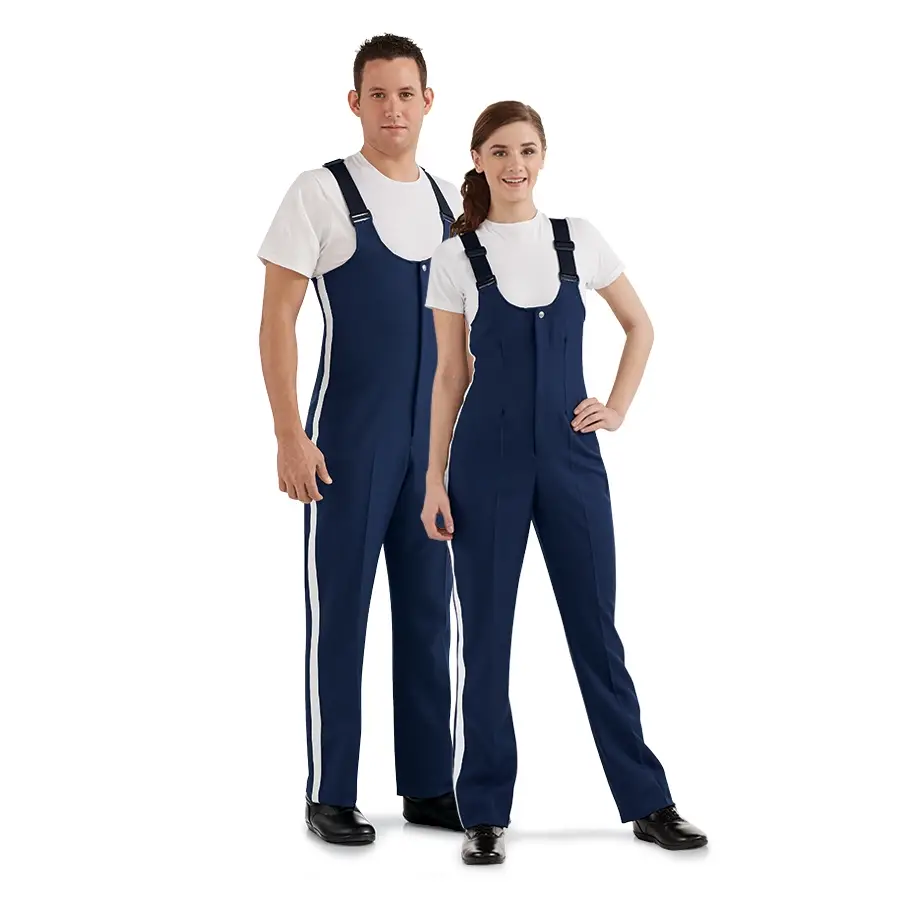

Marching Band Shoes
The final piece of a marching band uniform is your shoes. Marching uniform shoes are typically white or black and look like old-fashioned nurse shoes.
Two of the most popular brands of marching band shoes are Dinkles and Bando, and most marching musicians call their shoes by their brand name or simply “shoes.” Marching uniform shoes are designed to last, and it is common to wear one pair of shoes all four years of high school or college.
Top Tip: We researched what shoes are the best for marching band practice on and off the field. Check out this article to find out the results: Best Shoes for Marching Band (Read This First!)
Additional Accessories for Marching Band Uniforms
All marching band uniforms have shakos, plumes, jackets, bibbers, and shoes, but your school may have additional accessories.
Some schools will wear gauntlets on the ends of the uniform jacket. Gauntlets date back to the Middle Ages and were popular in armor to protect a knight’s wrists from being cut. Below are examples of uniform gauntlets.
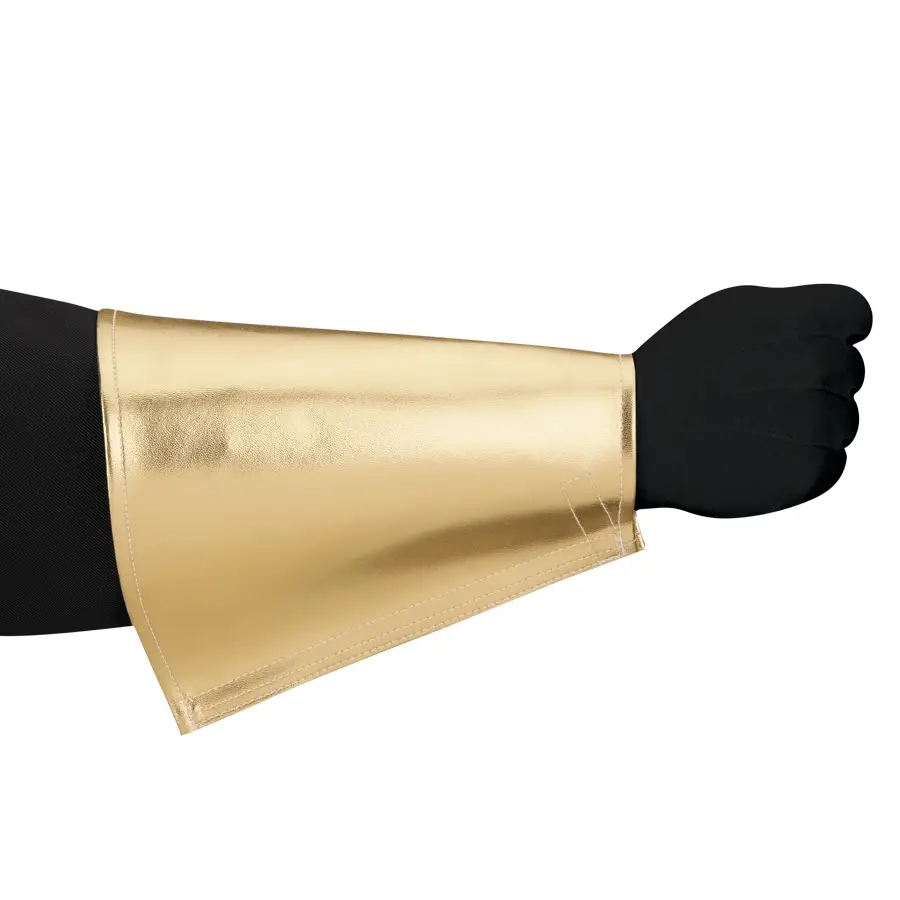
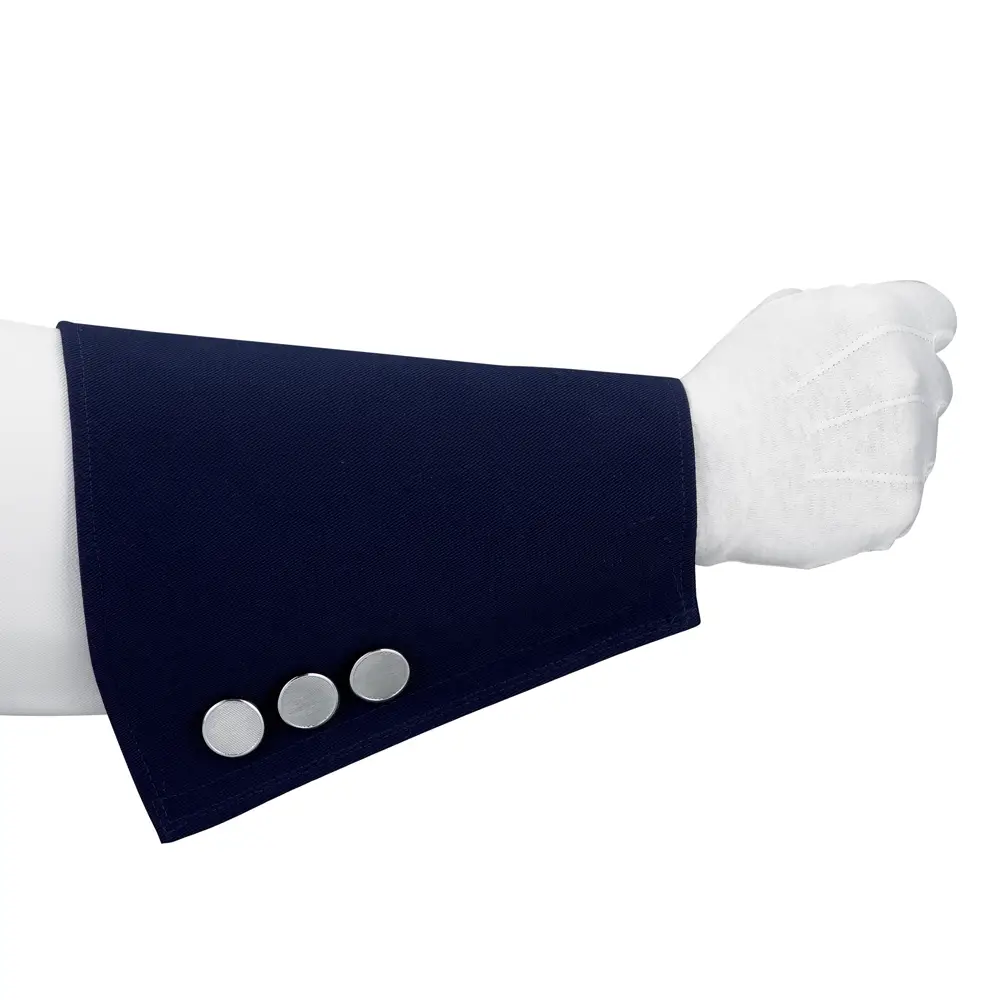
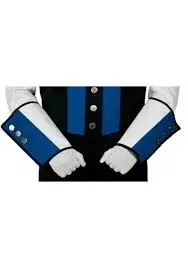
Another typical marching band uniform accessory is gloves.
Gloves are traditionally worn for parades, pre-game, and half-time performances. The purpose of gloves is for uniformity among all band members. The gloves are usually made of white or black cotton, and it is recommended that you buy at least two pairs of gloves so you will always have a fresh or clean pair to wear.
Brass players wear full-fingered gloves, woodwinds will cut the tips of the fingers off so they can use their fingers to cover holes and keys on their instrument adequately, and members of the drumline or battery will rarely wear gloves.
Gloves are especially useful for Color Guard as they are tossing and catching their flags and rifles.
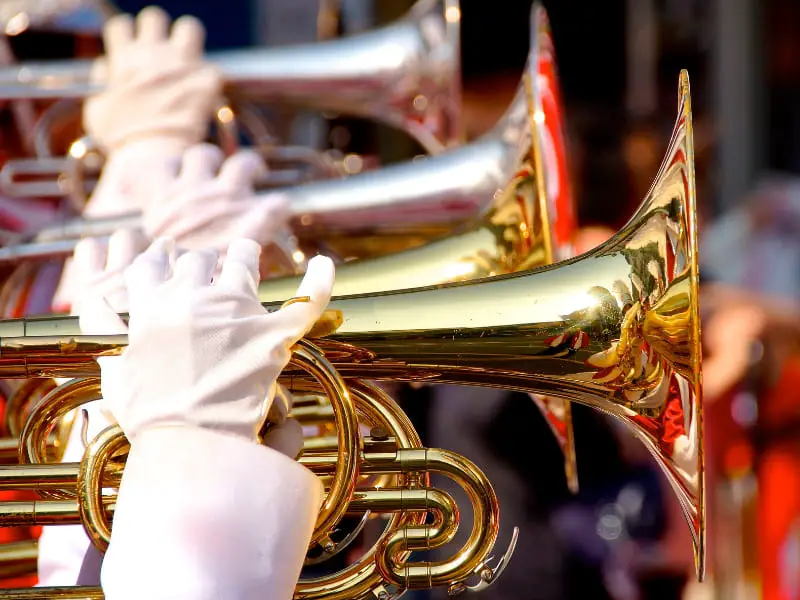
Some marching band uniforms will include shoulder cords which may be a standard part of their uniform jackets.
These can indicate graduating seniors/ members of leadership/ or the drum major.
Shoulder cords are inspired by the French-style military uniforms of the 17th-19th centuries and are part of military dress uniforms today. Your uniform jacket will have a button near the collar that secures a shoulder flap to your jacket. Cords will be placed under the shoulder flap and can come in many different styles and colors.
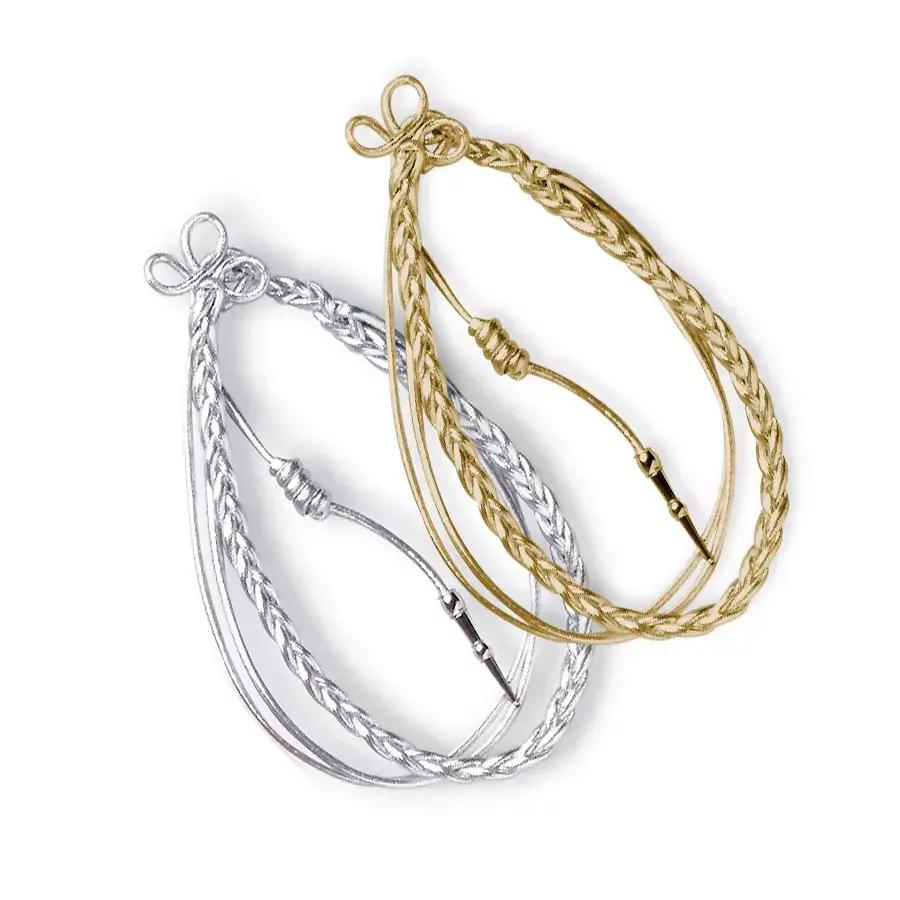
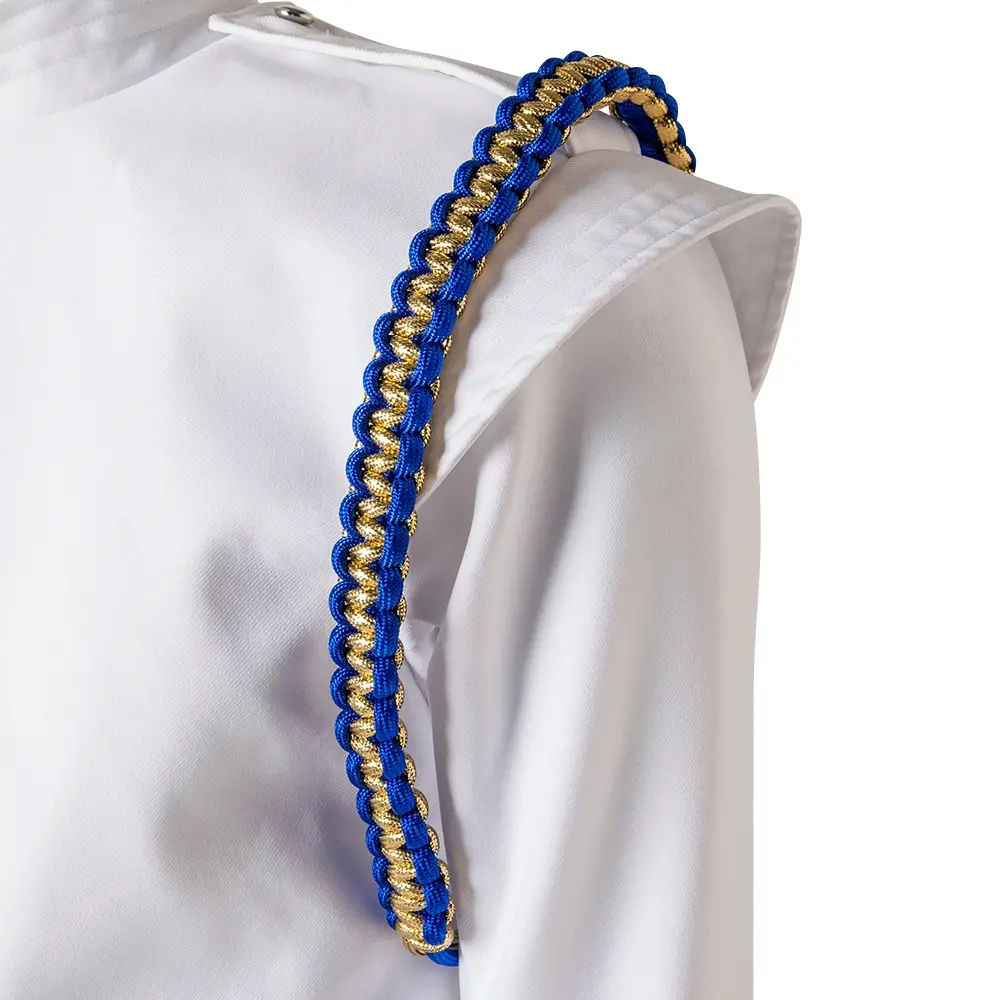
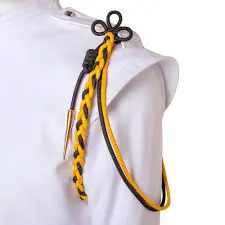
It is popular for members of marching bands to wear a t-shirt underneath their bibbers. These shirts can be spirit shirts or include the year and show theme for your high school.
Top Tip: If your school has a uniform shirt, you should remember to wear it because after competitions or in the stands during hot weather; you may be permitted to take off your uniform jacket.
The final extra accessory can be a baseball cap that all band members wear in the stands or during pep performances. Many college and university marching bands have their members wear baseball caps in the stands and require the traditional shako for march-overs (the process of marching as an entire band in a parade formation to the stadium before a game), pre-game, and halftime shows.
Marching Band Uniform FAQ’s
Why do marching bands wear Napoleonic uniforms?
Marching band uniform styles are heavily influenced by the Napoleonic era. The late 1700’s and early 1800’s in France and Europe had a distinct and strong military look. The style of the uniforms and specifically the plumes now worn by American marching bands mimic this look and haven’t deviated too far from it.
This look seems to be prevalent because of it’s sharp clean look and its deep history in the marching band world.
Do you get to keep your marching band uniform?
Typically bands will not let you keep your uniform during the season or after it is over. Most bands will have a specific storage area in the band room where they will hang the uniforms after performances. The uniforms will be kept in garment bags that zip up and have your name labeled on them.
Many bands, especially those on tight budgets will use the same uniforms year after year. You can expect when you are a freshman you will be measured for a uniform and either use one that has been worn by a previous student or have a new one ordered.
Note: Sometimes band members will get to keep an accessory that they used for the show. Things such as the gauntlet, cape, or other items used to modify the uniform to fit the show theme for that year.
When the band does upgrade to new uniforms they will generally try and sell the old ones or donate them to another organization.
Often when selling old uniforms your corps will allow alumni the first chance to purchase the old ones.
What do you wear under a band uniform?
As we discussed above you will generally wear your school spirit shirt or t-shirt under your jacket. Under your bibbers, you generally wear lightweight shorts, gym shorts, or bike shorts. Some bands that perform in cold weather will wear tight-fitting longjohns or leggings under the bibbers.
How do you iron a band uniform?
Check with the manufacturer’s directions and your band director before ironing to get specific instructions for your uniform. Most uniforms can tolerate low heat.
If you need to reset the hem on your pants you can use a lightly clean damp cloth placed in between your iron and your uniform. This will make it easier to iron out the old hem and set the new on.
Make sure your cloth it is colorfast (use a white one) and won’t bleed onto your uniform.
Top Tip: Be extremely cautious about ironing over buttons, zippers, or metal work as the heat from the iron could melt or imprint the button onto the material.
How do you wash your marching band uniform jackets & pants?
Care and cleaning of your marching band uniform will be specific to the type of uniform you have and the instructions that came with it from the company it was ordered. Always check with your band director first to get any instructions specific to your uniform type.
#1 . To clean your uniform you will want to remove anything that is attached and can be removed such as cords, emblems, or patches. They will likely be a snap you undo or velcro that is holding it on.
#2. Generally Marching band Jackets and bibbers can be machine washed separately on gentle cycle in cold water with very mild detergent. No detergents that use fragrance or harsh chemicals.
Make sure to keep your colors separate and especially anything that is white needs to be washed separately to keep it pure and brilliant in color.
#3. Dry your uniform by hanging it in a safe place. Do not put your uniform in the dryer! It will shrink and can be ruined. Put it out on a line to hang dry preferably out of direct sunlight.
If you have a stain on your uniform try to blot it up immediately with a clean towel or rag. Blot, do not rub! Most uniforms will do ok with a stain remover that you can apply before washing it, but check with the manufacturer first!
Top Tip: Be sure that you don’t ever put your uniform away for storage if it is wet. Whether it’s wet from rain or sweat it needs to fully dry or it can easily start to get moldy and smell like mildew.
Summary
Uniformity is the ultimate goal for marching bands, and their uniforms help achieve a clean and cohesive appearance while representing their school’s colors or logos.
With a history of military service and the legacy of marching bands, your uniform is a symbol of the past and the future.
The first time wearing the entire uniform in high school is exciting and quickly becomes your Friday evening outfit of choice. In college and university marching bands, wearing the uniform for the first time is a special moment because you worked hard to become part of the marching band.
While the first time you wear a uniform is a moment you never forget, the last time you wear your uniform your senior year is incredibly emotional. That uniform represents the last four (or five for college students) years of your life, the memories you have made, the shows you have played, and the family you were so fortunate to be a part of. Always wear your uniform with pride!
Disclaimer: This post may contain affiliate links. We only recommend high-quality products that are used and recommended by real musicians. If you use these links to buy something we earn a small commission.

